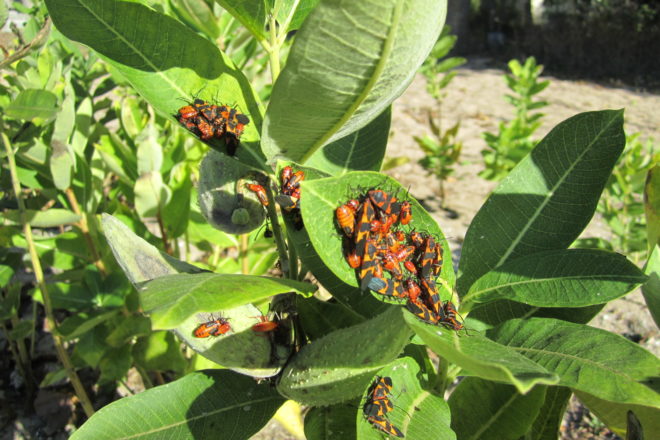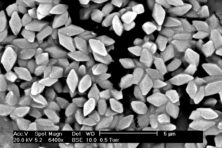Integrated Approach to Pest Management
- Share
- Tweet
- Pin
- Share

The whole concept of pest management took a turn in the mid-1950s. Up to that time, pest management mostly relied on synthetic chemicals, but there was a growing awareness of potential environmental and health concerns as well as problems with pests becoming resistant to pesticides. From there the idea of a multi-faceted approach to pest management – Integrated Pest Management – was born.
Integrated Pest Management (IPM) is now a common form of pest control for both the large-scale and backyard grower. IPM is founded on the concept of a justified use of pesticides (spraying with either natural or synthetic products only when it’s necessary) and combining those methods with other forms of pest control. In your home garden you are likely already doing this without even knowing it.
For example if you use Roundup only on stubborn weeds, but pull the rest out by hand, that’s IPM. Or if you let a few spiders remain in your garden rather than squishing them, that’s IPM. But the awareness and intentionality of the practice is key for successful pest management.
Before implementing any type of plan for managing pests, it is critical that you know exactly what pest(s) you are dealing with. UW-Extension offers free insect and weed identification and a plant disease diagnostic clinic that charges a small fee depending on the type of test that needs to be done. Samples and photos can be brought into the Door County Extension Office. Once the pest is identified, it is important to note how many and how much of the pest is there. Plants can tolerate a certain amount of damage, so it isn’t always worth the time or money to treat for everything. Lastly, if you decide that a treatment is warranted, you should do some research to determine when the pest is most susceptible to a treatment. The right product applied at the wrong time could have no effect.
When the time comes to choose how to control the pest there are a number of options. Thinking through each option before acting is foundational for IPM and is likely the most effective method of pest control. There are many options, but a few are listed below.
Physical/mechanical controls: hand weeding or tillage, physical barriers, row covers, removing diseased plants, mulching and trapping.
Biological controls: making the environment favorable for natural enemies of the pest. For example planting flowers to provide an alternate food source for tiny wasps that attack other insects.
Cultural controls: crop rotation, sanitation (removing infested plant material), changing the timing of planting and harvest, maintaining crop health so it can better fight off pests, and choosing disease resistant plant varieties.
Chemical controls: using an appropriate product that directly kills the pest or prevents its development while minimizing the impact on beneficials [good types of bugs to have in your garden such as ladybugs and green lacewings] and the environment. Make sure to carefully follow all label requirements since the label is the law.
Depending on the pest species and crop, some of these methods will work better than others. Also, sometimes there is nothing to do but rip out the plants, support farmers at your local farmers market and plan for next year. But knowing what pest you are dealing with and the most effective way to treat for it can help save you time and money and hopefully allow for a bountiful harvest.


